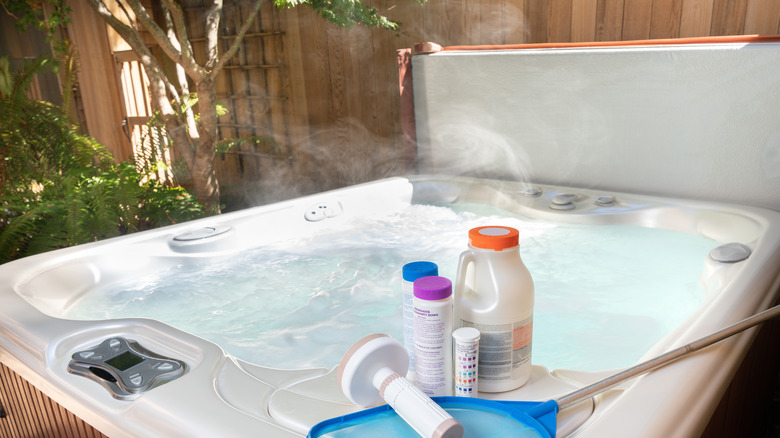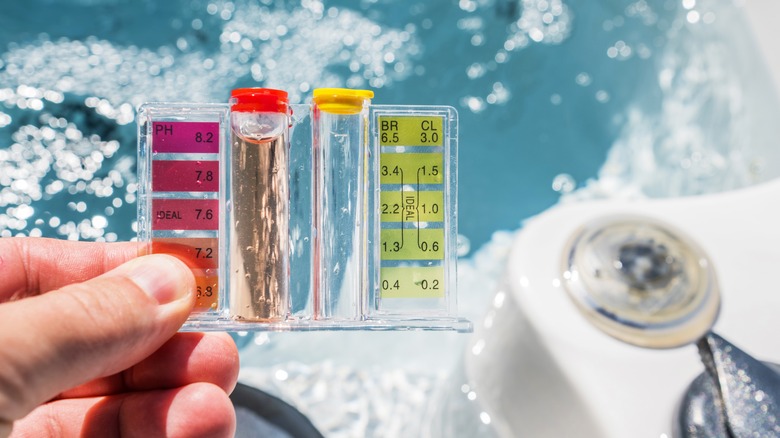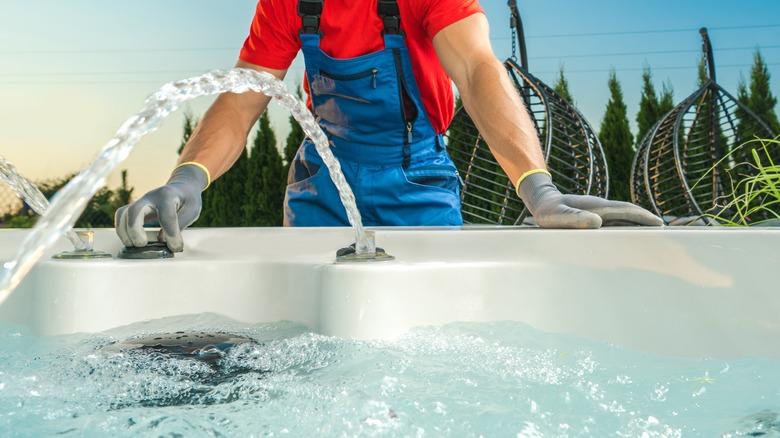How To Shock Your Hot Tub (And How Often)
Owning a hot tub often means performing some maintenance, including using oxidizer chemicals to keep the bacteria levels at bay. While cleaning your hot tub routinely to remove debris is an ongoing process, you also need to shock your hot tub once a week, adding an additional dose of chemicals to ensure it remains clean for routine use.
You don't want to overload your favorite relaxing spot with too many chemicals, though, as that could damage some of the working components. You can use chlorine or non-chlorine shock, depending on which you prefer. In either case, always follow the manufacturer's recommendations for proper hot tub maintenance and upkeep. Shocking a hot tub is much like shocking a pool. You're adding a high dose of chemicals to bring the water's bacteria level under control.
Doing this isn't about just pouring in extra oxidizing product, though. Instead, start by knowing the pH level your hot tub is currently at using a testing kit. Your goal should be a range of 7.2 to 7.8. If the water in the hot tub is too acidic, which means the pH is low, there's too much chemical in it. Once you know the current condition of the water, you can start the process of shocking it to bring it up to a safe, comfortable level.
Choose the product to shock your hot tub with
The next step is to select the right type of product to add to balance the pH and clear up the water. Typically, if the water seems to be cloudy and difficult to see through when the jets are not on, it's often best to use a non-chlorine shock. That's also going to help minimize the stinging of a too-low pH level. If the hot tub is dirty, and you can see material floating on it, or the water is green, it's time to up the game to a chlorine shock. This will do a much more thorough job of cleaning away the dirt and bringing the sanitization of the hot tub back to a safe level.
There are times when you'll want to consider either method. For example, it's better to use a chlorine product if you've used your hot tub significantly in the last week. It's also wise to do this after you've changed out the water in the hot tub to help eliminate bacteria that are still lingering. A non-chlorine shock is a good option for routine improvement of the water. It also works as a type of support tool for chlorine, helping it to work better over time. In this way, you'll likely want to use both products on and off based on what the hot tub's needs are.
How to shock your hot tub
First, remove the cover of the system to allow oxygen to reach the surface. While this is happening, make sure to verify the amount of water your hot tub holds, as that will play a role in determining how much shock you need. Next, turn on the jets and allow them to run for a few minutes. This allows for oxygen to move through the water.
Now, check the pH level and add the appropriate product in the right dosing to the hot tub. Since there are numerous types of shock products available with various strengths, follow the package directions for dosing. Pour the liquid in near the water inlet so as much of the product as possible is pulled into the system.
After adding the shock, wait at least 20 to 30 minutes before doing anything else. Then, check the pH level to be sure it's in a safe range before using your hot tub again. Make hot tub cleaning a routine process to minimize the downtime you have from an overgrowth of bacteria. For many, that means testing and treating the water on the same day each week to create some consistency.


